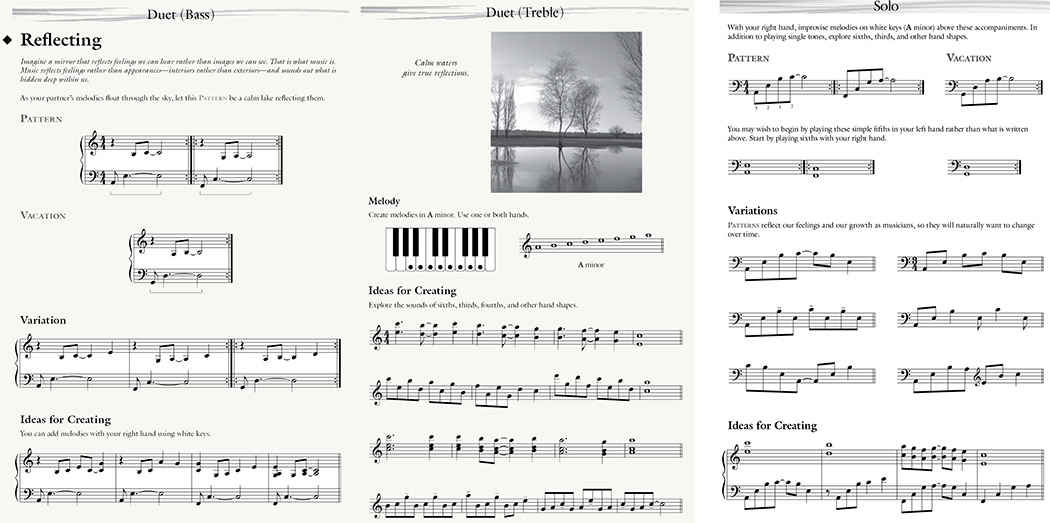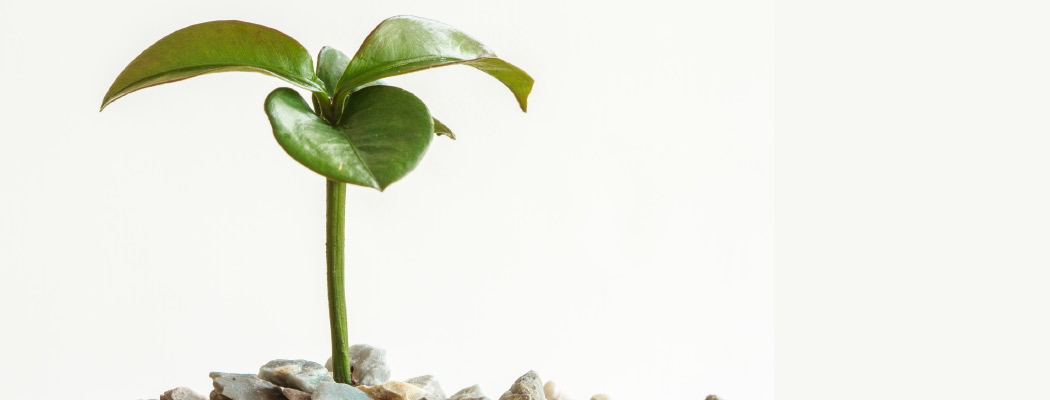Can we teach our students to create music, not merely perform it?
Most education is based on the assumption that students arrive as ‘‘blank slates’’ needing to be filled up with instructions, directions, and motivations. So we instruct, direct, and try to motivate our students, sometimes using subtle (and perhaps not so subtle!) forms of bribery and coercion. This manner of teaching has its time and place, but the teaching of creativity requires a radically different understanding and approach.
First of all, teachers of creativity have to view their students as seeds, not blank slates. A seed has an innate power to grow, an intense desire to grow, and an inner program that guides it. On the other hand, a blank slate is just a stone; it has no such capability or desire.
Viewing students as seeds reminds us that they possess an innate power to create, and they want to create something, even if they may seem resistant at first. Too often, our hands are tied by the common assumption that only a select few have enough ‘genius’ or ‘talent’ to create. On the contrary, the ability to create music is akin to the ability to create sentences spontaneously — it is latent within us all. However, unlike language, this ability is not often cultivated and expressed (at least, in our culture), so we believe it is a rarity. In my studio and in the studios of some other teachers I know, nearly all the students create music of their own, and they consider this to be something natural and even ordinary, not exceptional. Creativity is not a matter of having talent, or rock-star hair, or good genes; it is simply a matter of pedagogy.
Our primary job as teachers of creativity is to prepare the ground, provide the sunlight, and pour the water so that these strange seeds can grow. Our job is not to instruct these seeds on ‘how to grow’ because, after all, we really don’t know what kind of seeds we are dealing with — they haven’t grown into much of anything yet. Besides, seeds already ‘know’ how to grow — we have to trust in that. (So important, and yet so hard to do!) Our primary job is not to instruct but to provide an environment that is stimulating, safe, and inviting. Then we can stand back and watch in amazement as these seeds become colourful flowers or perhaps towering trees.
To give an example of this approach: when teaching students to improvise, I play an accompaniment pattern (usually from one of my Pattern Play books), and then give the student a set of tones to play with. I say to the student, ‘Play with me on black keys using just your right hand’, or ‘Play with me using these five notes from the key of D major’. On hearing a rich-sounding accompaniment, students are inspired to explore. By having just a few keys to play with, students feel secure and encouraged. They feel they can be successful and not look foolish or sound bad. Part of ‘making it safe’ for the student is making the accompaniment predictable (harmonically, and especially rhythmically) and short enough that the student is able to anticipate what may happen next.
True creativity can’t be taught directly. If we tell someone ‘how to create’ the result is not creative. It’s only a formula that may give the appearance of creativity. True creativity always arrives as something of a surprise. So, our job as teachers is much more about ‘educating’ than ‘teaching’. The word ‘educator’ means someone who can ‘lead out’. Our job as educators is not to pack in information, but to lead out creative gifts.
I have had so many wonderful experiences in which I asked a beginning student to play with me. Just the other day at a workshop, a 13-year old girl improvised a Tango with me that was astonishing. Afterward, the girl said that she didn’t know she ‘had it in her’. All of us have untapped music hidden within us. As teachers, we need to trust that, and then do our best to coax those gifts out of their hiding places.
Once we approach the teaching of creativity with this basic understanding, everything else falls into place. Then, each lesson and each day has its unique surprises, challenges, and delights.

